The $80 Power Supply for Almost Everyone: The Corsair TX550M 80Plus Gold PSU Review
by E. Fylladitakis on December 1, 2017 8:00 AM EST- Posted in
- Cases/Cooling/PSUs
- Corsair
- PSUs
- 550W
- TX
- Modular
- Power Supply
External Appearance
The TX550M is the least powerful model of the entire TX series. It is aesthetically simple and subtle, with the designer trying to find a balance between oversimplification and excessiveness. The chassis is sprayed with a satin black paint and decorative stickers cover the largest portion of its sides. These decorative stickers have the company logo and product model printed on them, and are placed in such a way that the sticker facing the right side of a case will always be upright, regardless whether the PSU has been installed with its cooling fan facing upwards or downwards. The sticker with the electrical specifications and certifications of the PSU can be found at the top side of the chassis.
With a body that measures 150 × 86 × 140 mm (5.9 × 3.4 × 5.5 in), the TX550M adheres fully to the ATX design guide, making it compatible with any ATX-compliant case. The design holds no surprises. At the rear we can see the typical AC receptacle and a small on/off switch, while at the front we find the four connectors for the modular cables and the hardwired cables. There are four connectors, three for Molex/SATA cables and one for a CPU/PCIe cable. Note that only the PCIe cable with the two 6+2 pin connectors is included in the original bundle. Still, if the user wants to power a system that requires two 4+4 pin CPU cables but has no PCIe connectors at all, it is possible to do so with a TX550M.
Internal Design
Due to its standard ATX chassis, the largest fan that Corsair could fit in the TX550M is a 120 mm NR120L. Corsair rebrands their fans and we cannot tell who the original manufacturer is but we can tell it has a rifle (advanced sleeve) bearing engine and a maximum speed of about 1500 RPM. The design of the blades suggests that it is a very high-pressure fan, which appears to be a strange selection for a PSU without excessively packed internals.
The OEM behind the creation of the TX550M is a Chinese OEM, Great Wall. We first encountered Great Wall’s designs when Corsair first implemented their platforms back in 2011. Great Wall is not a very popular OEM but they frequently cooperate with Corsair and their products were proven to be reliable.
The filtering stage of the TX550M begins on a small PCB soldered at the back of the AC receptacle and continues onto the main PCB. We counted a total of four Y capacitors, two X capacitors and two filtering inductors, which are the standard for a quality PSU. There is one conversion bridge feeding the APFC circuitry. Surprisingly, the 550W unit has two APFC capacitors, each rated at 450V/220μF. Great Wall could easily replace these two small capacitors with an equally effective larger one. The APFC coil is shielded inside a plastic casing, most likely to prevent electromechanical noise (also known as “coil whine”).
Generally speaking, the platform of the TX550M is technologically simple, based on circuitry designs that are being used into consumer PSUs for many years. Two MOSFETs form the simple half-bridge primary inversion circuitry and four MOSFETs generate the 12V line on the secondary side of the main transformer. The DC-to-DC converters found on the vertical PCB generate the minor 3.3V and 5V rails. It would seem that the PSU owes its 80Plus Gold efficiency rating to the use of highly efficient active components, as we have seen other units using the same base platform with minimal differences failing to reach such high efficiency standards.
All of the capacitors inside the TX550M are coming from Japanese manufacturers. The primary APFC electrolytic capacitors are from Nippon Chemi-Con. The secondary capacitors, electrolytic and polymer alike, are supplied by Nippon Chemi-Con or Rubycon. Both manufacturers are considered to be two of the most reliable manufacturers and are highly popular. The heatsinks of the PSU appear to be adequate for an 80Plus Gold certified PSU but they could definitely be much better.


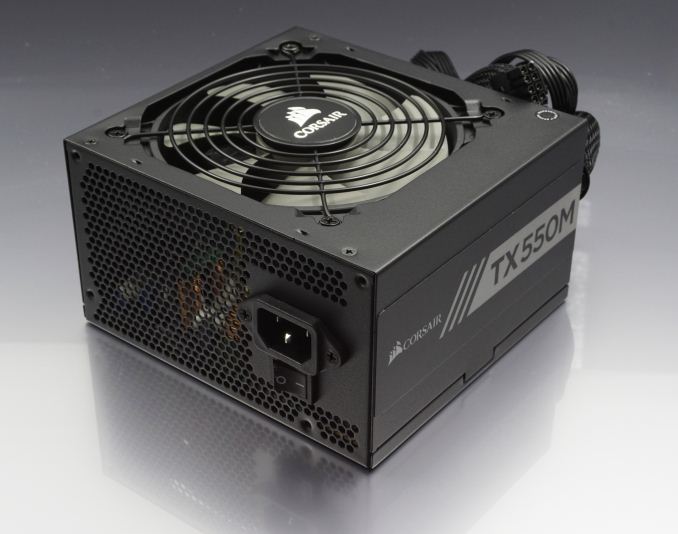
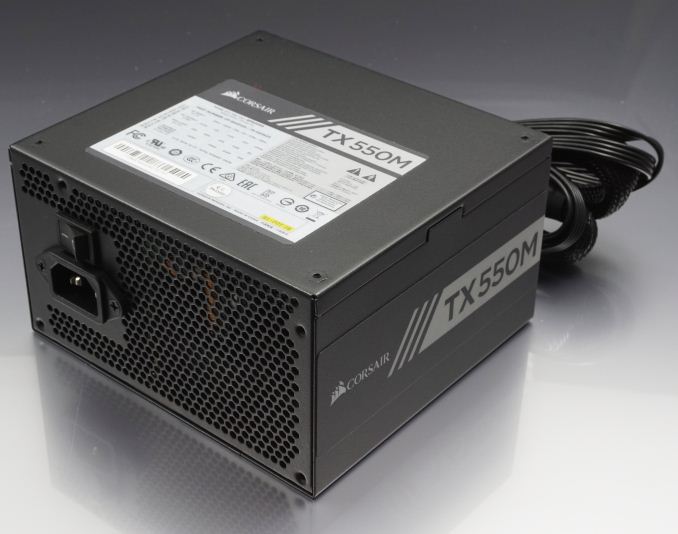
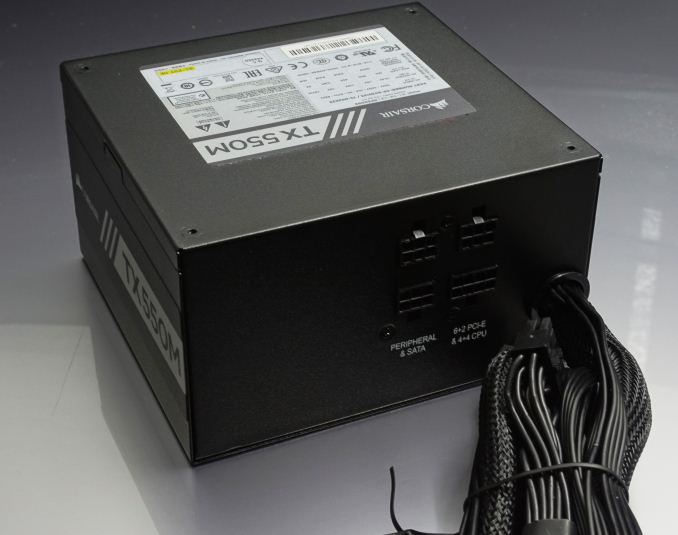
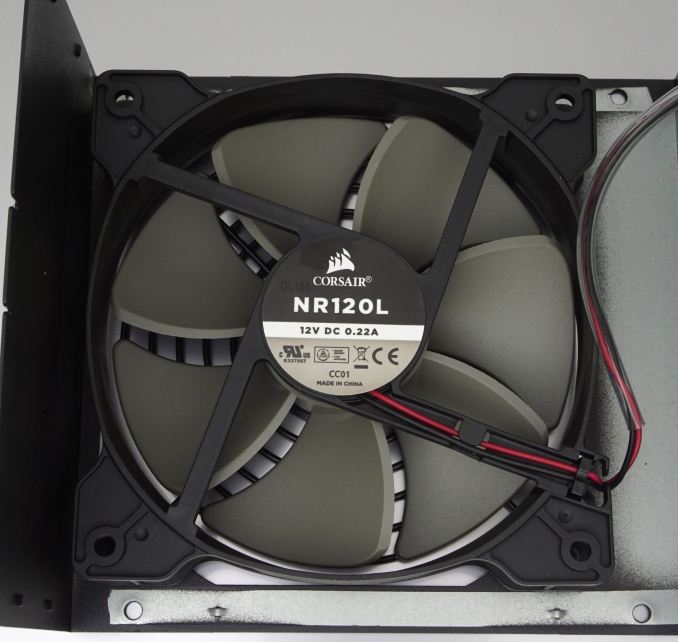
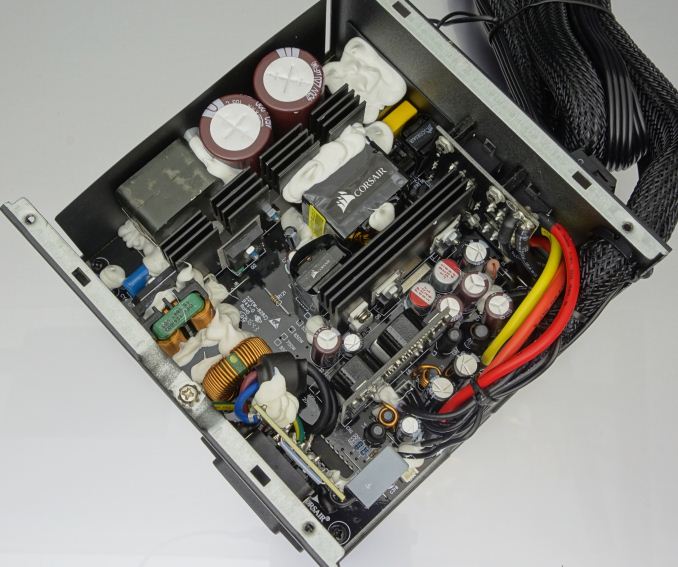
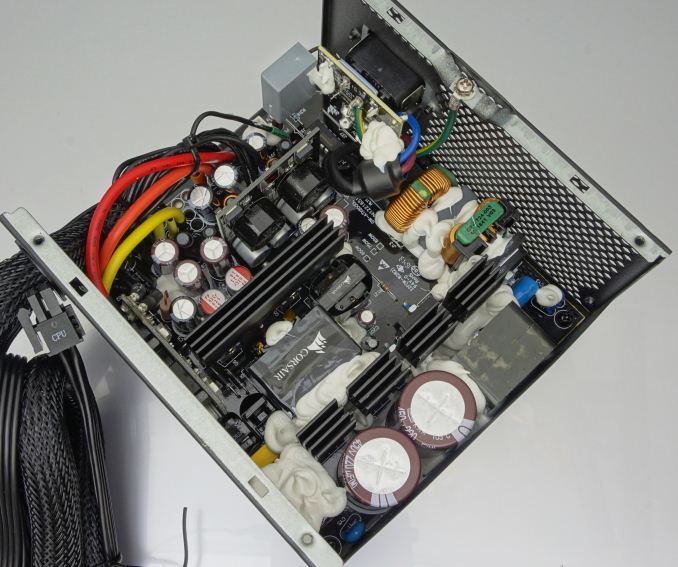
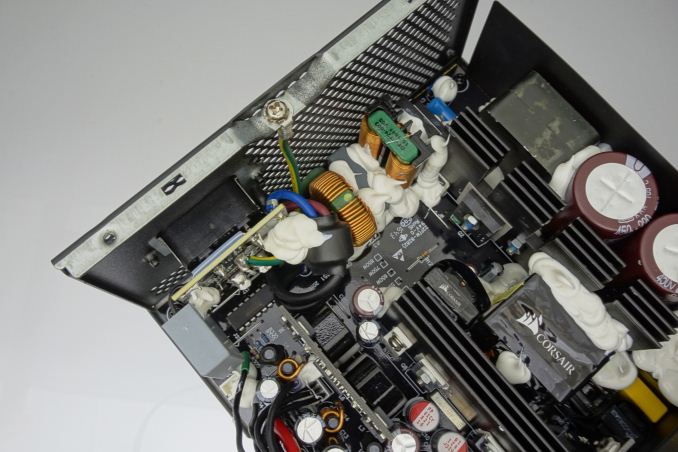
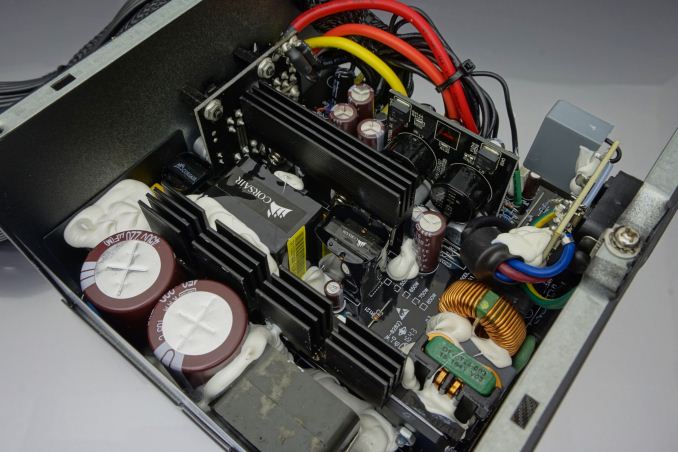
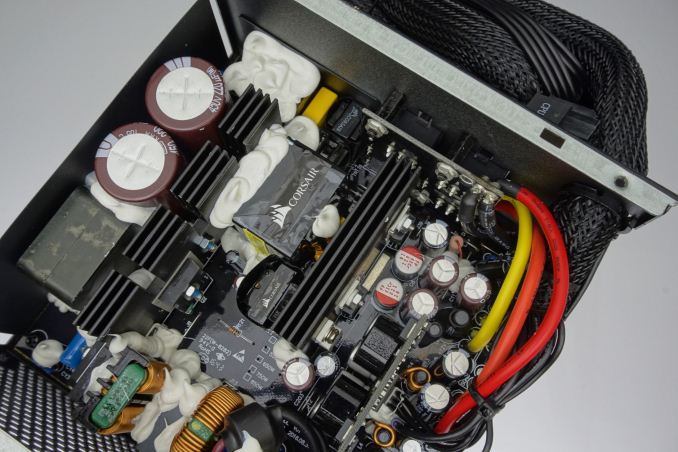








42 Comments
View All Comments
sweeper765 - Sunday, December 3, 2017 - link
Using 8700k OC'ed, 2x8gb ddr4 1.35v, gtx 1060, 3 hdd, 2 ssd.I get 35-40 W idle and about 270W max load.
So even 300W would be enough, though ideally for efficiency would be 550W. No need to go higher.
Oxford Guy - Saturday, December 9, 2017 - link
The optimal range for total system power is just 300 watts with a top-tier card? Yeah, right.There are two other reasons to have extra capacity in a PSU:
1) Capacitor aging
2) Lower loads on higher spec units tend to be quieter.
Oxford Guy - Saturday, December 9, 2017 - link
Another thing is that there are spikes in power usage. Sometimes transient spikes are quite a lot above the average power usage.Manabu - Monday, December 18, 2017 - link
1) Even with capacitor aging, there no need to buy a PSU more than double the max consumption of your system. So, a 300W PSU is indeed too low for a top-tier card, but a 550W one would already be more than enough. For my system with a mid-low range GPU with 250W max load (175W more normal high load) a 350W would also be plenty.2) There are platinum fanless 400W psus. Low wattage psus being noisier is just a reflect of this warped market that only valorizes high wattage psus. On the other hand, lower loads on higher wattage psus tend to be less efficient, so more heat in the ambient.
Alistair - Friday, December 1, 2017 - link
No idle fan mode, no buy. This alone shows the cooling is poor, and the noise profile will be poor. Many other better choices. Shame Corsair for not including a standard feature nowadays.Oxford Guy - Saturday, December 9, 2017 - link
This site tends to not put enough emphasis on noise. However, at least it was the only one that called out Seasonic for its terrible performance in the 1050 model that could be "heard from rooms away".Ken_g6 - Friday, December 1, 2017 - link
Why should I buy a currently-$72 Corsair, when I can get either a $55 Seasonic FOCUS Plus after rebate, or a $60 Rosewill Capstone before rebate (other versions of which are an AnandTech Editor's Choice)?oranos - Friday, December 1, 2017 - link
hard to buy anything other than seasonicairdrifting - Sunday, December 3, 2017 - link
Again there are better quality power supply for less money. Every power supply recommendation article on Anandtech has been crap so far leading me to believe you guys are just bunch of shills paid by those companies.Kyt - Sunday, December 3, 2017 - link
There are better, yes. Some of us don't have access to all brands and models and when you are choosing between only 3 brands, you would want to know what you're getting and this is where this review becomes useful.